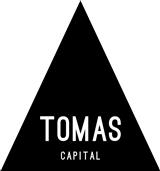Tomas Capital Pty Ltd
GCAF | USD

| Minimum Investment |
$ 1,500,000
|
|---|---|
| Management Fee | 2.00% |
| Performance Fee | 20.00% |
Summary
All performance and AUM figures are calculated from the live track record of Tomas Capital's Australian fund, GCAF | AUD (managed by Tomas Capital Australia Pty Ltd). All figures have been recast to USD, accounting for interest rate differentials, foreign exchange exposures, and adding back Australian Goods and Services tax and brokerage mark-up fees (specific to GCAF | AUD). All raw performance figures for GCAF | AUD are available at www.tomascapital.com.au.Antifragile
"Some things benefit from shocks; they thrive and grow when exposed to volatility, randomness, disorder, and stressors and love adventure, risk, and uncertainty. Yet, in spite of the ubiquity of the phenomenon, there is no word for the exact opposite of fragile. Let us call it antifragile. Antifragility is beyond resilience or robustness. The resilient resists shocks and stays the same; the antifragile gets better." Nassim Nicholas Taleb (2012). Antifragile: Things That Gain from Disorder. Random House. p. 3.
Antifragile Market Hypothesis
We reject the Efficient Market Hypothesis and all market theories whose foundation rests upon the concept of value or other unobservables. Prices are set by the interactions of people seeking an edge over one another. Trading profits are redistributed from those without an edge to those operating with an edge. Most edges are transient or fragile, whereas a small class are timeless or antifragile. The underlying process driving prices reflects the interplay between these opposing classes of edge.
To gain an edge, we must separate ourselves from the majority. To achieve this, we must engage in an activity the majority is unable to do or we must engage in an activity the majority is unwilling to do: there is a dichotomy in the source of edges that we refer to as the willingness dichotomy. Edges sourced via activities the majority are unable to do require superior speed, technology, knowledge or information and persist with help from barriers to entry and privacy; these intellectual edges are latently fragile. Edges sourced through activities the majority is unwilling to do exist within the public domain and do not rely on barriers to entry to persist; they are psychological edges and must, by virtue of their persistence, be antifragile.
The competition for intellectual edges is fierce. Intellectual edges degrade and eventually dissipate as the competition for them heats up. New intellectual edges emerge as people evolve and improve on one or many of their barriers to entry; these new edges in turn degrade and the process repeats. This accounts for the observation that markets are very nearly efficient. A person who enjoys profits from a prevailing intellectual edge is not guaranteed to enjoy these profits over the long run; their continued success is contingent upon their ability to evolve their activities in the direction of new intellectual edges.
The competition for psychological edges is comparatively low: the unwillingness of the majority to engage in the activities necessary creates the primary barrier to entry. The majority seeks stable and consistent returns that are psychologically rewarding. Given this, all psychological edges must produce psychologically difficult return distributions, that include the potential for long periods of underperformance punctuated by shorter periods of superperformance. A person who is willing to embrace an edge with a psychologically difficult return distribution has the potential to enjoy profits over the long run.
Antifragile Strategy
We apply the concept of antifragility to our selection of trading strategy, and its application.
Antifragile trading strategies exhibit the following characteristics:
1. They extract profits from timeless market phenomena that are self-evident to the general public and have been so for many years.
2. They necessitate a long-term investment horizon that produces a lumpy distribution of returns, with a high positive skew.
3. They benefit from volatility, variability, divergence and uncertainty.
4. They require a systematic application of reactive position taking and risk management, with no attempt to predict market outcomes.
We assert that, consistent with the Antifragile Market Hypothesis, the existence of long-term price trends occurring within all markets is self-evident and timeless market phenomena, presenting all the hallmarks of an antifragile edge. Any trading strategy that seeks to profit by exploiting the phenomenon is necessarily antifragile and will exhibit the above characteristics.
The GCAF Program seeks to compound capital by capturing long-term price trends that are evident within all markets from time to time. In application, the program seeks to push the boundaries of antifragility to ensure compounding longevity.